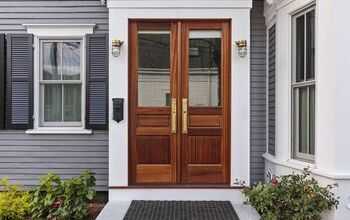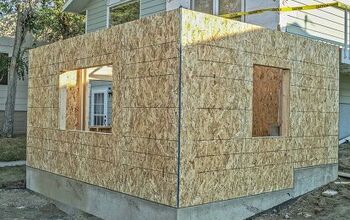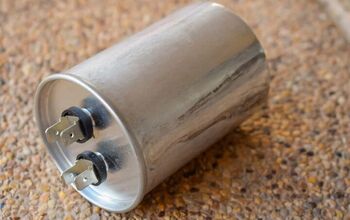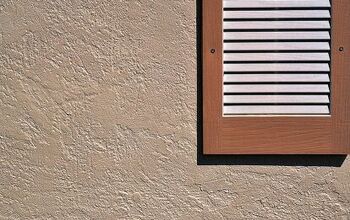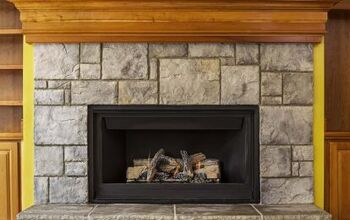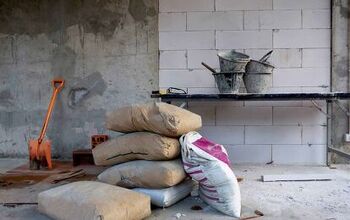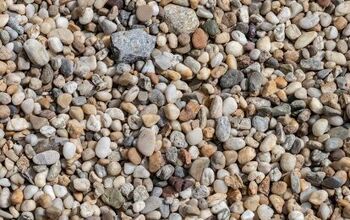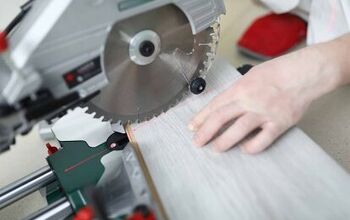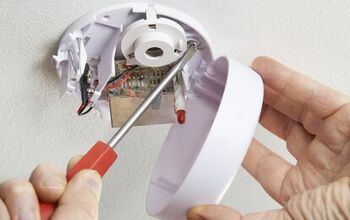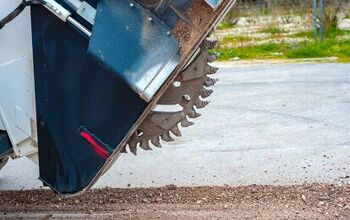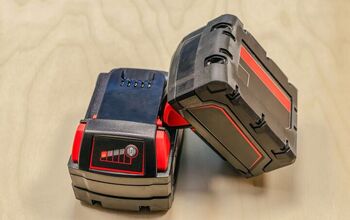Batch Feed Vs. Continuous Feed Garbage Disposals: Which Is Better?

Garbage disposals are one of the most common appliances in homes. They not only reduce the amount of trash that we produce, but also save us time. If you are looking for a new garbage disposal, there are two basic styles – batch feed and continuous feed.
A batch feed disposal turns on when you put a stopper in the drain. A continuous feed garbage disposal turns on from a switch on the wall. Otherwise, these two types of garbage disposals work much the same. You put food waste into the chamber of the unit through the drain of your kitchen sink, and turn on the unit.
There are advantages and disadvantages to both styles of garbage disposal. Let’s go over some details of each type to help you make the best decision for your home.
Do You Need Appliance Installation or Replacement?
Get free, zero-commitment quotes from pro contractors near you.

How Garbage Disposals Work
Garbage disposals break down food waste inside a black chamber that you can see under your kitchen sink. The sink drain is connected to the top of the chamber, and the drain pipe for your plumbing is connected to the side of the chamber. On the underside of the disposal chamber is a reset button and hex nut that works an allen wrench. We’ll talk more about the reset button and the hex nut.
When you put food waste through the drain of your kitchen sink, it enters the chamber of the garbage disposal. When the unit is turned on, angled blades spin at high speeds to break down the food waste.
The disposal uses a dual spinning action. The blades of the disposal are connected to a flat platform that rotates, and the blades also rotate. Running water from the kitchen faucet moves the pulverized food waste into the drain pipe of your plumbing.
Batch Feed vs. Continuous Feed: What’s the Same?
Batch feed and continuous feed garbage disposals share the same chamber design. The units have plumbing connections, rotating blades, reset switches, and hex nuts.
Batch Feed vs. Continuous Feed: What’s Different?
The key difference between a batch feed and continuous feed garbage disposal is how you turn on the unit. With a batch feed garbage disposal, the stopper for the drain is the power switch for the unit. You put food waste into the chamber, place the stopper in the drain, and rotate it. This locks the stopper and turns on the unit.
For a continuous feed garbage disposal, you turn on the unit from a wall switch. The unit operates without a stopper in the drain, and you can add food waste while it is running.
Let’s take a closer look at each type of garbage disposal.
Batch Feed Garbage Disposals
Batch feed garbage disposals have advantages and disadvantages. The units also require some attention for proper operation.
Pros of a Batch Feed Garbage Disposal
- Safe Operation: Because batch feed garbage disposals require the stopper to be locked in place, there is a higher level of safety – great for homes with small children.
- Quiet Operation: The stopper of a batch feed garbage disposal muffles the grinding of food waste.
- Less Mess: The stopper prevents food particles and water from shooting out of the drain of your sink.
- No Wall Switch: You don’t have to wire a switch for a batch feed garbage disposal. Good for kitchen with limited wall space.
Cons of a Batch Feed Garbage Disposal
- Not Efficient: If you have more food waste than what the chamber can hold, you have to work in small batches.
- Slow Operation: Even though batch feed units share the same basic design as continuous feed units, they tend to take more time to pulverize food waste
- Require More Space: Batch feed garbage disposals are larger than comparable continuous feed units. This is not ideal for kitchens with limited space under the sink.
- Stopper Get Damaged and Lost: If you lose or damage the stopper for a batch feed garbage disposal, you won’t be able to operate the unit.
- Higher Cost: Batch feed garbage disposals are more expensive than continuous feed units.
Continuous Feed Garbage Disposals
Continuous feed garbage disposals have been around the longest, and the design has changed very little since it was first developed in the 1920s. Over the years, the units have become more efficient and reliable. Continuous feed garbage disposals have many advantages, but they also have some disadvantages.
Pros of a Continuous Feed Garbage Disposal
- Fast: Continuous feed garbage disposals pulverize food waste very quickly.
- Several Blade Designs: You can find continuous feed garbage disposals with blades strong enough to break down bones and other types of hard food waste.
- Efficient Operation: Rather than work in small batches, you can feed food waste into a continuous feed garbage disposal without stopping.
- Budget-Friendly: Because continuous feed garbage disposals are so popular, there are many styles and models available that fit every budget.
- Reliable: The simple design of a continuous feed garbage disposal makes this a very reliable option.
Cons of a Continuous Feed Garbage Disposal
- Open Drain: You cannot plug the drain if you have a continuous feed garbage disposal, even if all the food waste fits into the chamber. The unit requires running water from the faucet to operate properly.
- Risk of Injury: Injuries from garbage disposals are rare, but possible. The units can cause serious injuries. Continuous feed garbage disposals require a great deal of awareness for safe operation.
- Blade Damage: Open drains are the perfect place for the random fork, glass, sponge, and other items to fall into the chamber. Having objects other than food waste inside the chamber when it runs damages the blades. The entire unit may need to be replaced.
- Noise: Continuous feed garbage disposals are louder than batch feed units.
- Messy: Food particles come out of the open drain while the garbage disposal is running.
How to Fix Common Problems with Garbage Disposals
Garbage Disposal Won’t Turn Off
A batch feed or continuous feed garbage disposal that won’t turn off indicates that there is a wiring problem. Turn off the circuit breaker to the disposal. A batch feed garbage disposal won’t turn off when there is a problem with the locking sensor in the plug. You can have the unit repaired or replace it. For a continuous feed garbage disposal, the issue is in the wall switch. Check the wiring or replace the switch.
Garbage Disposal Won’t Turn On
There are a few reasons why a garbage disposal won’t turn on. Check the red reset button on the underside of the chamber. It should be slightly depressed. If the button is not depressed, the garbage disposal has overheated. Let it cool down, and press the reset button. Check to see if the garbage disposal works.
If the reset button is already depressed, the issue is with getting power to the unit. Check to make sure that the unit is plugged into the outlet under your sink. If it is, you need to troubleshoot a bit more.
For a batch feed garbage disposal, the electrical connection between the stopper and chamber is not working. Replace the stopper. If the problem continues, the electrical connection on the chamber needs to be repaired.
For a continuous feed garbage disposal, check that the connections from the wall switch to the chamber are secure. If those connections look good, the problem is in the wall switch. Check the wiring or replace the switch.
Garbage Disposal Overheats
Batch feed and continuous feed garbage disposals overheat when the chamber contains objects that get trapped in the blades. Let the unit cool down, and reset the red button on the underside of the chamber. While it is cooling down, use a pair of tongs or pliers to clean out the chamber. Never put your hand into a garbage disposal.
Garbage Disposal Won’t Drain
A garbage disposal that won’t drain indicates a problem with the drain pipe of the plumbing. Some food waste, such as grease, rice, and pasta, clogs drain pipes. Turn off the garbage disposal and run hot water from the faucet for a few minutes. If this doesn’t help, use a plunger to clear the clog. You can also try a mixture of vinegar and baking soda or a drain cleaning solution. If you can’t clear the clog, have a plumber look at the pipes.
Garbage Disposal Leaking
If you find food particles and water under your sink, the gaskets in the garbage disposal are damaged. Remove the unit and replace the gaskets. If the unit continues to leak, it needs to be replaced.
Related Questions
Should I run hot water when I use my garbage disposal?
Only use cold water when you use your garbage disposal. Hot water makes the food particles stick to the inside of the chamber and the blades.
How do I clean my garbage disposal?
Clean your garbage disposal with items from your pantry. Vinegar and baking soda dissolve food particles inside the chamber. Ice and salt clean the blades. Finish with a few lemon peels to deodorize the garbage disposal.
Do the blades of a garbage disposal need to be sharpened?
Garbage disposals do not have blades in the traditional sense. The blades of a garbage disposal are angled pieces of metal that do not need to be sharpened.
Do You Need Appliance Installation or Replacement?
Get free, zero-commitment quotes from pro contractors near you.

Summary
Batch feed and continuous feed garbage disposals reduce the amount of trash that is produced in your home. Batch feed garbage disposals are safer, quieter, and don’t require a wall switch. If you lose the stopper or if it gets damaged, you cannot use the unit. Batch feed garbage disposals also require more room in the cabinet under your sink.
Continuous feed garbage disposals are more efficient and affordable. You can find several styles of continuous feed garbage disposals, and they fit well under most kitchen sinks. These units are noisier, and food particles can come spewing out of the kitchen drain. You have to exercise more caution when operating a continuous feed garbage disposal.

Jennifer L. Eggerton loves being hands-on, whether it's with a home DIY project, making repairs, re-decorating a room, or keeping life organized. She enjoys helping people by sharing her knowledge, insights, and experiences, as well as her lessons learned. In addition to her work as a writer, Jennifer is a Jeep® overlander, self-published author, and nature photographer who loves being outdoors.
More by Jennifer Eggerton



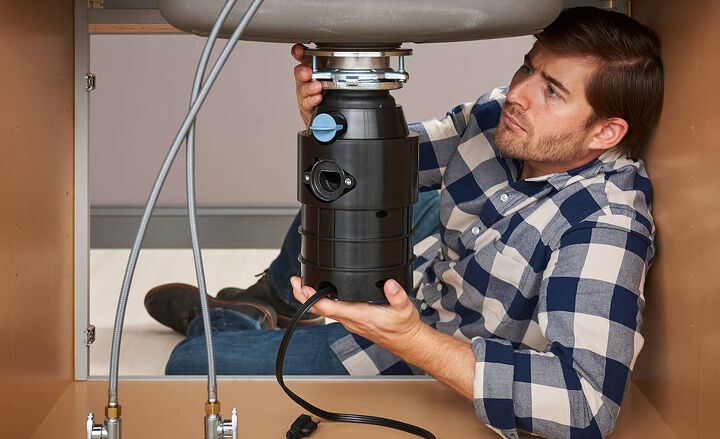






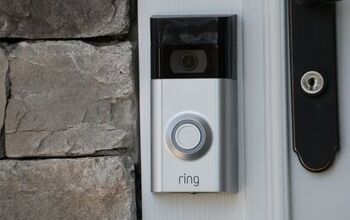
![The 10 Best Table Saws - [2022 Reviews & Buyer's Guide]](https://cdn-fastly.upgradedhome.com/media/2023/07/31/9070645/the-10-best-table-saws-2022-reviews-buyer-s-guide.jpg?size=350x220)

![The 5 Best Angle Grinders – [2022 Reviews & Buyer's Guide]](https://cdn-fastly.upgradedhome.com/media/2023/07/31/9071326/the-5-best-angle-grinders-2022-reviews-buyer-s-guide.jpg?size=350x220)
